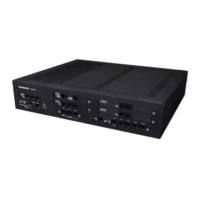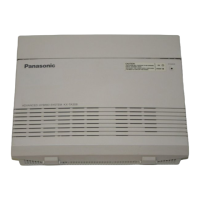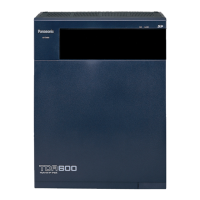[Using KX-NS700 as Slave units]
• All units must have a DSP card installed.
• The Fax Server feature is supported only by KX-NS1000 PBXs (® 20.1.38 Unified Messaging—Fax
Server). Therefore, the UM groups of non-KX-NS1000 PBXs should not be specified as the destination for
faxes.
• Activation keys can be installed on any type of PBX from the Master unit. This includes activation keys only
available for non-KX-NS1000 PBXs (e.g., KX-NSF991).
• The following features normally available on KX-NS700 PBXs are not available on a One-look network:
– SVM (Simplified Voice Message)
– PT system programming
– Remote maintenance via ISDN or analog modem
• The maximum capacity for the following items is lowered when participating in a One-look network:
Feature KX-NS700 standalone One-look
SMDR Call Storage 40,000 calls 1000 calls
Installation Manual References
2.1.1 System Configurations
8.4.1 One-look Network
8.4.3 Information about Slave Units
PC Programming Manual References
10.1.1 PBX Configuration—[2-1-1] System—Date
& Time—Date & Time Setting
10.1.2 PBX Configuration—[2-1-2] System—Date & Time—SNTP / Daylight Saving
Feature Manual References
14.1.5 One-look Network—IP Network Type Comparison
15.1.3 PC Programming
14.1.5 One-look Network—IP Network Type Comparison
Description
This section summarizes the main differences between the two methods for connecting PBXs over an IP
network: One-look networking and H.323 (VoIP) QSIG networking. It also explains which situations each type
of network is suited for.
Overview of characteristics
Item One-look Network H.323 QSIG Network
Connection type Private IP network Private IP network
Compatible PBX type
• KX-NS series • KX-NS series
• KX-NCP series
• KX-TDE series
• KX-TDA series
Document Version 2016-03 Feature Manual 245
14.1.5 One-look Network—IP Network Type Comparison

